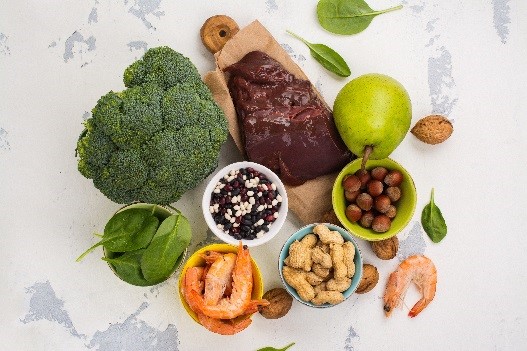Generally, the level of phosphorus ranges from 3.5 to 5.0 mg/dl. If serum level of phosphorus in your blood is higher than 5.5 mg, it can be diagnosed as hyperphosphatemia.
Causes of Hyperphosphatemia
Because the kidney cannot work properly in renal failure patients, the excess phosphorus will accumulate in the blood and form hyperphosphatemia. In addition, active vitamin D3 generates a metabolic disorder, resulting in imbalances in calcium and phosphate levels in blood.
Symptoms
Hyperphosphatemia can cause secondary hyperparathyroidism, metastatic soft tissue calcification, renal osteodystrophy, skin itching, cardiomyopathy, and anemia, among other symptoms.
Principles of Low Phosphorus Diets
- Phosphorus is a common content in food, so foods with high phosphorus contents, such as yeast, jiansutang (健素糖), viscera, whole grains (brown rice, whole-wheat bread), beans, nuts, and egg yolk, should be avoided as far as possible.
- Taking aluminum hydroxide or calcium carbonate tablets (phosphate binders) can reduce phosphorus absorption. However, when taking aluminum tablets, they should be chewed and thoroughly mixed with food for phosphate binding.
- Try to use fresh meat, no broth, less chop soup.
- For milk products, formula milk for dialysis or fresh milk can be used instead of milk powder.
- Limit the amount of phosphorus ions in the diet to 700 to 800 mg or 45 to 50 mEq/day, and combine with the use of phosphate binders, so that the level of phosphorus in the blood can be maintained at 4.5 to 5.5 mg before dialysis.
- Food containing more than 250 mg of phosphorus per 100g should be avoided as far as possible.
|
Foods rich in phosphorus >250mg/100g
|
|||||||
|
Egg
|
Bean
|
Meat
|
Fish
|
Grains and root vegetables
|
Vegetable
|
Oil and fat
|
Other
|
|
Yolk,
Pigeon egg
|
Black soy bean,
Tofu skin,
Swordbean,
Vicia faba,
Detarieae,
Mung bean,
Red bean,
Soybean,
Dougan
|
Pork liver,
Pork floss,
Pork jerky,
Crispy pork,
Chicken liver
Sausage
|
Dried shrimp,
Squid,
Abalone,
Karasumi,
Fish floss,
Squid
|
Gluten,
Nutritive rice,
Wheat,
Oatmeal,
Flour,
Brown rice
|
Seaweed
|
Black sesame
|
Yeast powder,
Jiansutang,
Cheese,
Peanut,
Guazi,
3-in-1 coffee
|


